
Sustainable in Seattle
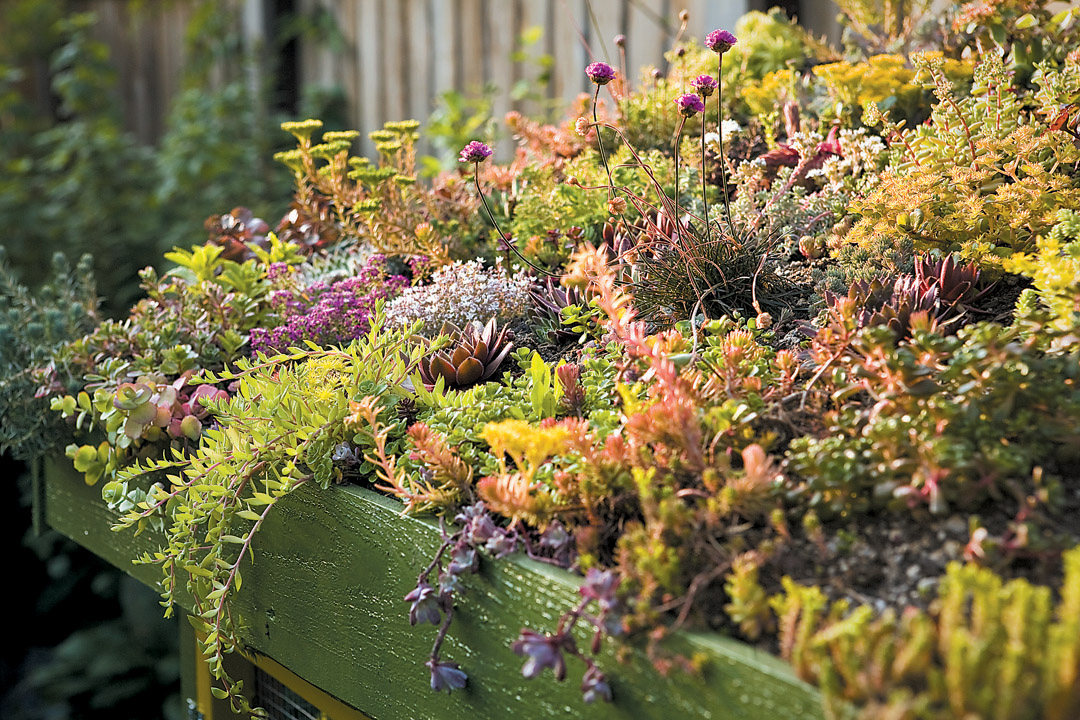
Contributor
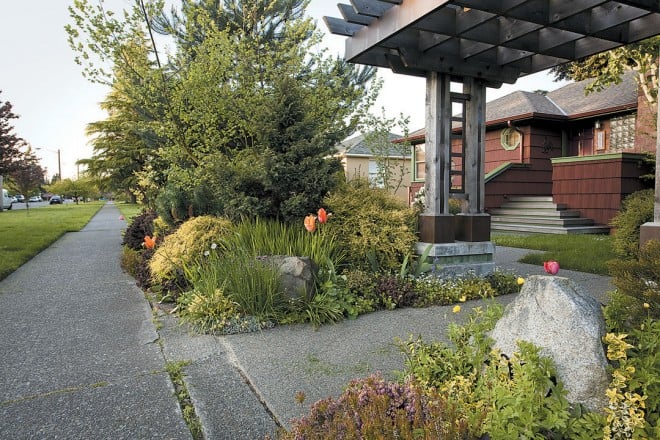
Jennifer Carlson’s garden fits so seamlessly into her older Seattle neighborhood you’d never guess that, over the last eight years, every inch has been retrofitted with sustainable features and systems. Good intentions don’t always add up to the most beautiful gardens, but Jennifer’s little urban farm is as attractive as it is exemplary. From a composting fence to the permeable patio, every eco-savvy element in the garden contributes to its sustainability, as well as its comfort, beauty, and productivity.
When most of us walk into a garden, we see the plants, the house, the patio. Jennifer looks beyond the surface to discover a property’s physical history, where the sun falls, the composition of the soil, how water flows, and where it collects. From topography to maintenance, Jennifer ponders how each part of the garden can be built, engineered, or planted so that it adds up to one integrated, sustainable whole.

The result is a garden where every square inch is utilized. How did she so elegantly shoehorn cisterns, edible plants, and a variety of creatures into a 7,000-square-foot city lot? Jennifer’s garden has private places to sit and relax, a sunny corner devoted to growing food and flowers, native plants to attract wildlife, an effective water recycling system, and a garden shed with rooftop solar panels in its future.
It helps that Carlson is just plain handy. A landscape architect with her own design/build firm, she is also a teacher, an artist, a color consultant, a wife, and a mother. As I toured her garden on a cold, drizzly March morning, I couldn’t help but think it all comes down to handiness—along with vision and a lot of hard work.
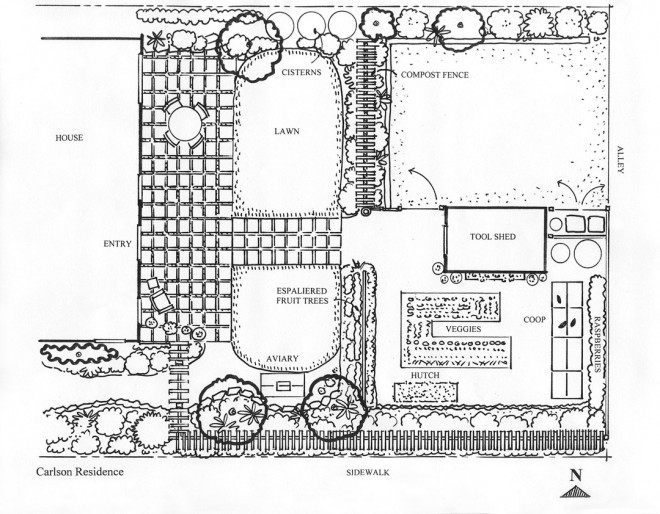
Building the Soil First
When Jennifer and her family moved to Seattle’s Magnolia neighborhood eight years ago, she immediately began tearing out ivy, removing a dead tree, and eliminating shrubs crowding against the house. Then she set about building healthy soil. “Every week, I’d take a couple of empty buckets to the neighborhood coffee shop and exchange them for two full buckets of coffee grounds,” remembers Jennifer. She tore out the lawn to widen the beds, dug in compost and coffee grounds, and started planting.

The color starts out front, with the leaf green trim and purple door setting off the home’s brick red paint. A hefty arbor shelters the entrance to the garden, and wide, curved beds hold textural plantings of year-round foliage. Every shrub, tree, and perennial is sufficiently durable and drought tolerant to survive Jennifer’s tough-love maintenance regime. “I’m out here just five times a year weeding and deadheading, and that’s it except for mowing,” she says. Hardworking plants, like rudbeckia, crocosmia, euphorbias, and sedums, are paired with small shrubs such as Viburnum davidii, Spirea ‘Magic Carpet’, and yellow boxleaf honeysuckle (Lonicera nitida ‘Baggesen’s Gold’) and repeated throughout the garden. Winter-flowering currant (Ribes sanguineum) feeds the hummingbirds; even the narrow side garden is productive with plantings of artichokes and a fig tree espaliered against the house.
Around back, three huge cisterns gather enough rain from the home’s 1,000-square-foot roof to water the entire garden. Jennifer simply attaches a hose or hooks up a sprinkler to the three dark green polypropylene cisterns (625 gallons each), lined up against the back fence. Then there’s the espaliered fruit hedge, berries, chickens, doves, and an angora rabbit. Jennifer points out how the animals fertilize the garden, and how the rainwater collected from the roof is used to irrigate the vegetables, concluding, “I’ve always been a big picture person.”
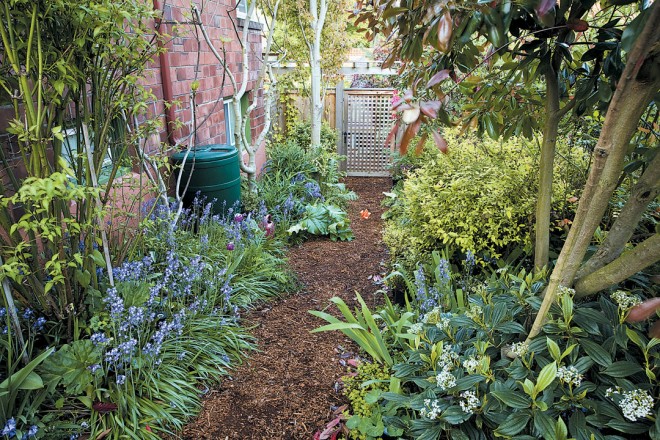
The Kitchen Garden
The big picture included a recent demolition of the old garage, its wood and windows repurposed to build the new shed and greenhouse. The shed’s footprint is considerably smaller than that of the garage, leaving room for a 750- square-foot kitchen garden in the back corner of the property. The raised beds are topped with ledges wide enough for sitting, both for ease of gardening and to provide seating for the students attending classes that Jennifer teaches in her garden.
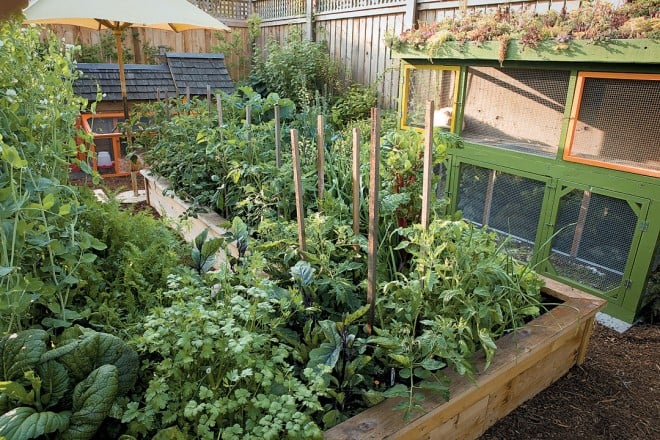
In this sunny corner, Jennifer grows parsley, carrots, sugar-snap peas, several kinds of basil, garlic, chives, leeks, eggplant, heirloom tomatoes, and beets (both red and golden). “The kitchen garden is seeping out into the rest of the garden,” admits Jennifer with a laugh. Rhubarb, strawberries, and kale mingle with ornamentals in the beds. Asian pears, plums, and apple trees are espaliered as a living fence, underplanted with dwarf blueberries.
This spring, Jennifer started not only vegetable seeds in her new shed but also unusual annuals to sell as bouquets in her own version of CSA, or community supported agriculture (you order for the season, she delivers weekly bouquets). Six kinds of sunflowers, zinnias, and bells of Ireland (Moluccella laevis) share space with edibles in the kitchen garden. The wide windowsill on the shed holds a potted garden of flowers that attract pollinators. Jennifer grows these annuals and perennials in pots so she can easily change them as they go in and out of bloom; alyssum, columbine, snapdragons, verbena, lavender, and nasturtiums draw a variety of birds and bees to her vegetable garden.

Could she possibly squeeze one more thing into the kitchen garden? How about the five chickens, one fuzzy rabbit, and a few doves? She built the coops and hutch out of recycled wood and pallets, and painted them in bright colors. She composts the animals’ bedding and manure, and she enjoys their company. “Chickens contribute more than just eggs,” she says, “We feed them kitchen waste, and they produce incredible compost. Chickens have such a great sense of humor. They thrive on social interaction.” The rabbit hutch is topped with a green roof planted in sedums and dwarf thrift (Armeria). “It’s no work and looks good all year,” says Carlson of the shallow, blooming roof above the adorable angora rabbit. And yes, Jennifer harvests and spins his luxurious fur.

“There’s a really nice choreography out there,” is how Carlson describes all the planning, vision, and work that’s gone into creating a garden that serves as her farm and classroom—without looking like either.
Share:
Social Media
Garden Futurist Podcast
Most Popular
Videos
Topics
Related Posts

Ground Up Science for Greener Cities with Garden Futurist Dr. Alessandro Ossola
Spring 2023 Listen to the Podcast here. Alessandro Ossola is a scientist who gets very excited about the challenge of climate change allowing for an

Readying Urban Forests for Climate Realities with Garden Futurist Dr. Greg McPherson
Winter 2023 Listen to the Podcast here. “Going from the mow and blow to a more horticulturally knowledgeable approach to maintaining the landscape. And that
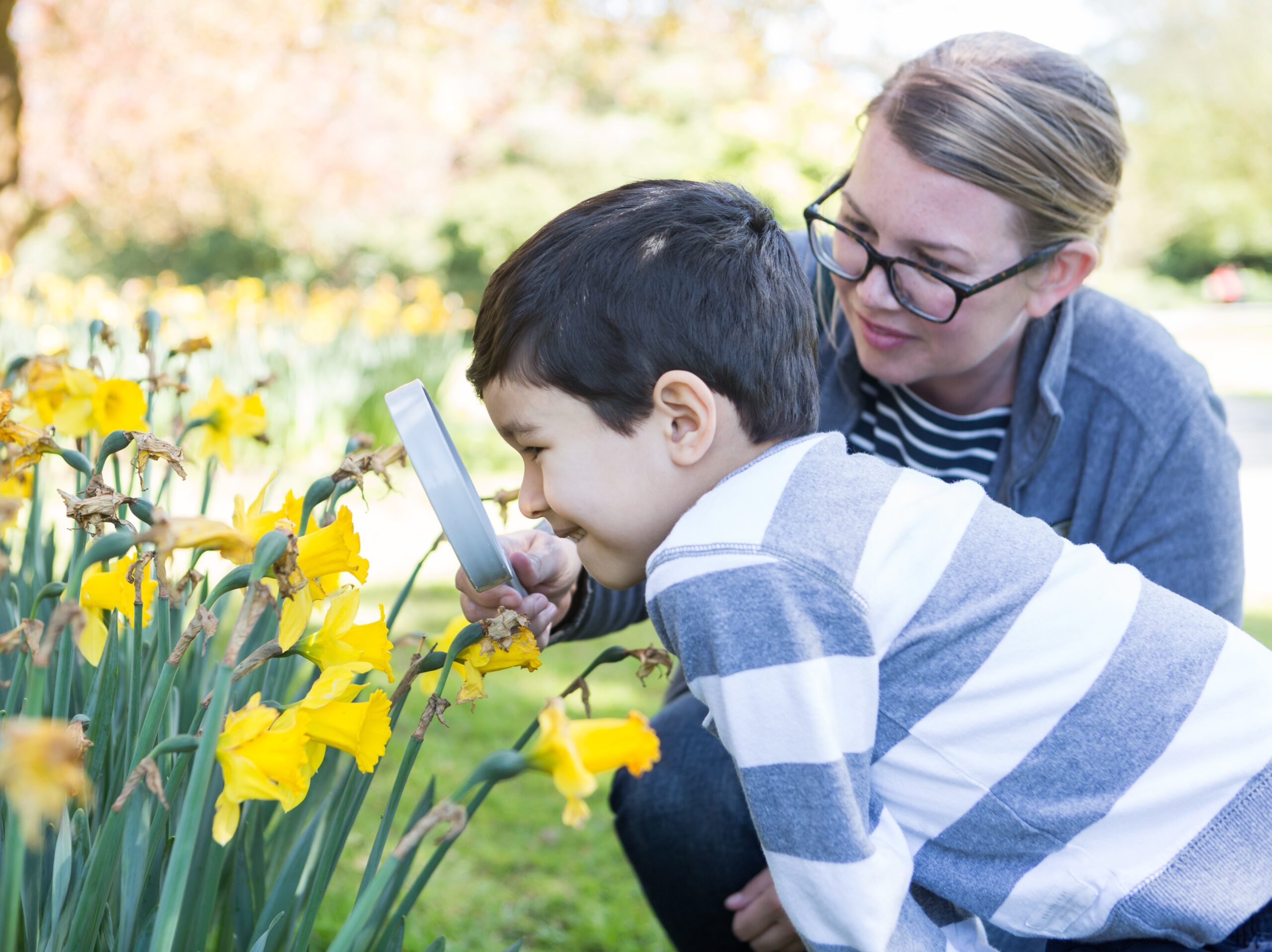
January Showers Bring February flowers…
Fall 2022 It may not quite have the same ring to it as the old English proverb, but it has a lot more truth to

Low Maintenance Gardens – Better for Pollinators and People
Autumn 2022 “I come out every day. It’s therapy, my meditation.” Janet’s young garden transformed from overgrown, invasive plants to mostly natives. The dailiness of










Responses